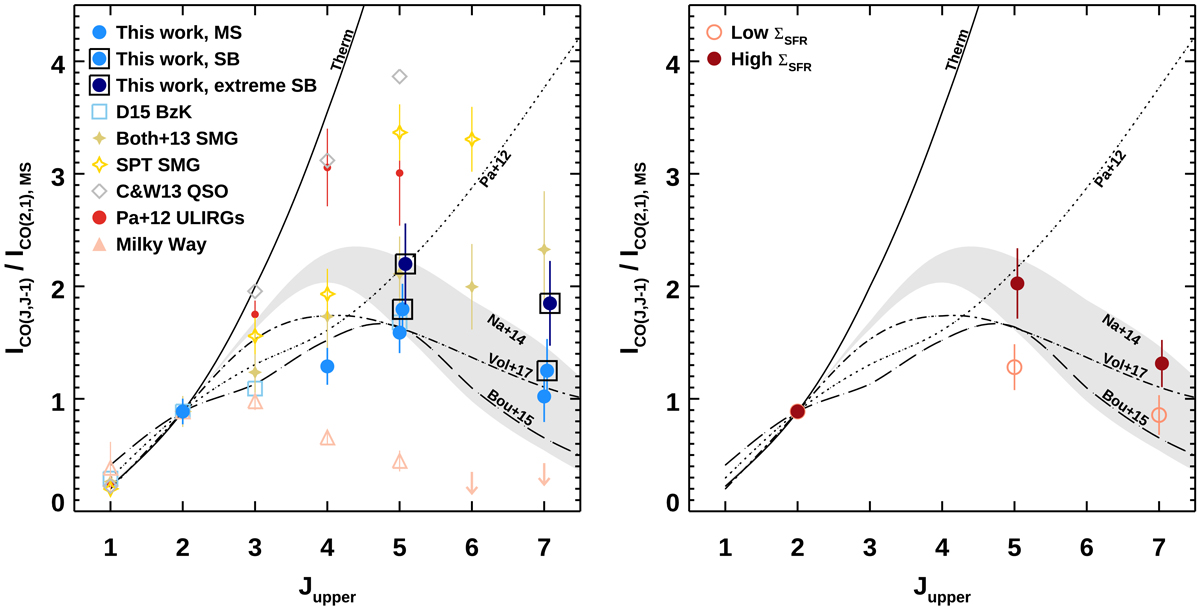Fig. 8.

CO excitation ladder. Left: average CO SLEDs of our samples compared with results from the literature. Each SLED is normalized to the mean CO (2 − 1) flux of main-sequence galaxies at z = 1.25. Blue filled circles and open black squares indicate the mean SLEDs of galaxies on the main sequence, starbursts (ΔMS ≥ 3.5), and extreme starbursts (ΔMS ≥ 7), as labeled. The literature samples include the BzK galaxies from D15 (open light blue squares); the average SMGs from Bothwell et al. (2013) (filled green stars) and the SPT-selected ones from Spilker et al. (2014) (open golden stars); high-redshift QSOs from Carilli & Walter (2013) (open gray diamonds); local ULIRGs from Papadopoulos et al. (2012) (red filled circles); the inner disk of the Milky Way from Fixsen et al. (1999) (open pink triangles). The upper limits are at 3σ significance. The solid line shows the line ratios for a fully thermalized case. The gray shaded area marks the model by Narayanan & Krumholz (2014) for unresolved observations within ΣSFR = 1−10 M⊙ yr−1 kpc−2. The long dashed line indicates the simulations from Bournaud et al. (2015). The dotted line traces the empirical model by Papadopoulos et al. (2012). The dashed-dotted line points at the analytical model by Vollmer et al. (2017). Right: mean CO SLEDs for a subsample of objects with detections of CO (2 − 1), CO (5 − 4), and estimates of LIR and FIR sizes, split at the median value of ΣSFR. Light empty and dark filled red circles indicate the low and high ΣSFR subsamples. Both SLEDs are normalized to the CO (2 − 1) flux of the main-sequence sample as in the left panel.
Current usage metrics show cumulative count of Article Views (full-text article views including HTML views, PDF and ePub downloads, according to the available data) and Abstracts Views on Vision4Press platform.
Data correspond to usage on the plateform after 2015. The current usage metrics is available 48-96 hours after online publication and is updated daily on week days.
Initial download of the metrics may take a while.


